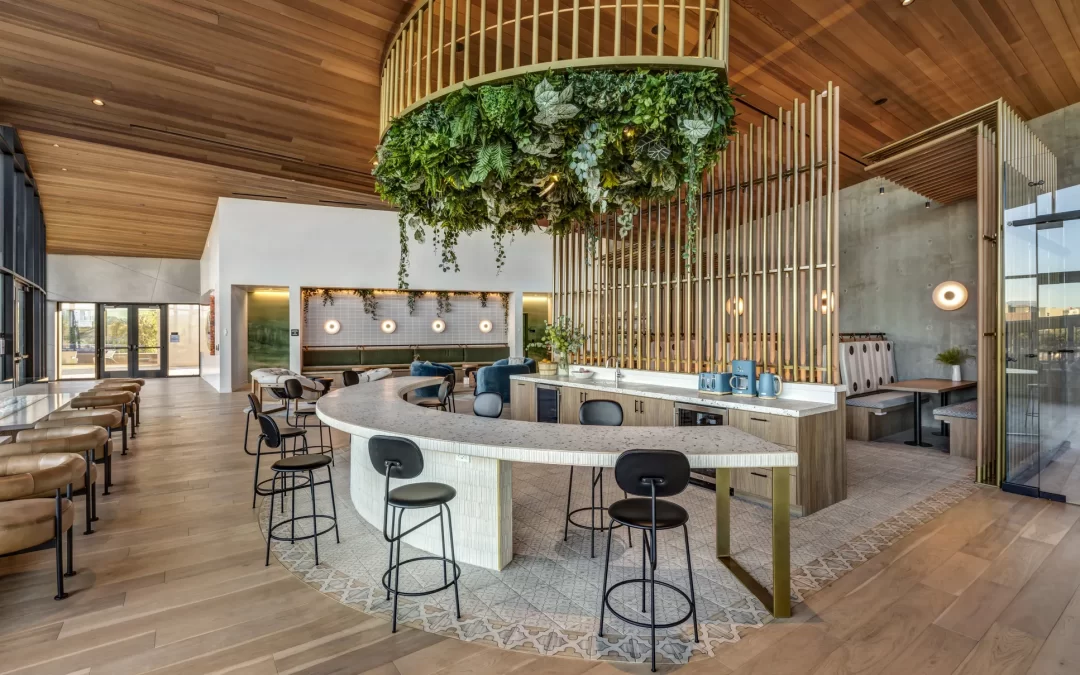When it comes to hospitality design, every detail matters—especially when it’s about creating spaces that cater to the diverse needs of guests. One such detail that often gets overlooked but can significantly enhance guest satisfaction is the concept of connecting guestroom options. But what exactly are these options, and why are they so important? Let’s break it down.
Connecting guestrooms refer to two or more adjacent rooms that are linked by a private, internal door. This setup allows guests to move freely between rooms while maintaining privacy from the rest of the hotel or building. Think of it as a mini-suite for families, groups, or business travelers who need extra space but still want the convenience of separate rooms.
But connecting guestrooms are more than just a functional solution. They’re a thoughtful design choice that can elevate the guest experience, foster a sense of community, and even boost a hotel’s reputation. Whether you’re designing a boutique hotel, a luxury resort, or a budget-friendly inn, incorporating connecting guestroom options can set your property apart from the competition.
Why Connecting Guestrooms Matter
In today’s hospitality landscape, guest expectations are higher than ever. Travelers want flexibility, comfort, and personalized experiences—and connecting guestrooms deliver on all fronts. Here are some key reasons why they matter:
-
Catering to Families and Groups
For families traveling with children or groups of friends, connecting guestrooms offer the perfect balance of togetherness and privacy. Parents can stay in one room while kids sleep in the next, or friends can have their own space while still being close. -
Business Travel Convenience
Business travelers often work in teams, and connecting rooms allow colleagues to collaborate easily while maintaining individual privacy. -
Increased Revenue Potential
By offering connecting rooms, hotels can attract a wider range of guests—families, groups, and business travelers—who might otherwise book multiple properties or opt for larger, more expensive suites. -
Enhanced Guest Satisfaction
Thoughtful touches like connecting rooms show that a hotel is attuned to its guests’ needs, leading to higher satisfaction and positive reviews.
Designing Connecting Guestrooms: Best Practices
Designing connecting guestrooms isn’t just about slapping a door between two rooms. It requires careful planning to ensure functionality, aesthetics, and guest comfort. Here are some tips to get it right:
-
Plan the Layout Thoughtfully
The placement of the connecting door is crucial. It should be discreet yet easily accessible, and it should maintain the privacy of both rooms. Consider placing it near the entryway or between the living areas of the rooms. -
Ensure Soundproofing
One of the biggest concerns with connecting rooms is noise transfer. Invest in high-quality soundproofing materials for the walls and doors to ensure guests aren’t disturbed by their neighbors. -
Maintain Consistent Aesthetics
Both rooms should have a cohesive design that reflects the hotel’s brand. This creates a seamless experience for guests and reinforces your property’s identity. -
Add Functional Touches
Think about what your guests will need in a connecting setup. For families, this might include extra storage or child-friendly amenities. For business travelers, it could mean a shared workspace or additional power outlets. -
Make It Versatile
Design connecting rooms so they can function as standalone spaces when the connecting door is closed. This ensures maximum flexibility for your guests and your hotel.
Real-World Examples of Connecting Guestrooms
Let’s look at some real-world examples of hotels that have nailed the concept of connecting guestrooms:
-
The Ritz-Carlton
Known for its luxury offerings, The Ritz-Carlton seamlessly integrates connecting rooms into its upscale design. Rooms are soundproofed, elegantly furnished, and tailored to meet the needs of families and business travelers alike. -
Hilton Hotels
Hilton’s connecting room options are designed with families in mind, featuring amenities like cribs, extra bedding, and kid-friendly snacks. The brand also offers a “connected suites” option for larger groups. -
Marriott International
Marriott’s connecting rooms often include shared living spaces, making them ideal for extended stays or group travel. The design is modern yet functional, with a focus on guest comfort.
Tips for Marketing Connecting Guestrooms
Once you’ve designed your connecting guestrooms, it’s time to let your guests know about this fantastic option. Here’s how:
-
Highlight It on Your Website
Create a dedicated page or section on your website that explains the benefits of connecting rooms. Include photos, videos, and testimonials to showcase the convenience and comfort they offer. -
Train Your Staff
Make sure your front desk team understands the value of connecting rooms and can effectively communicate this to guests. -
Offer Special Packages
Create packages or promotions that include connecting rooms, such as family-friendly deals or group travel discounts. -
Use Social Media
Share visuals and stories about your connecting rooms on platforms like Instagram and Facebook. Highlight how they’ve made a difference for past guests.
Common Challenges and How to Overcome Them
While connecting guestrooms offer many benefits, they’re not without their challenges. Here’s how to tackle some common issues:
-
Maintenance Concerns
Connecting doors and soundproofing materials require regular maintenance to ensure they function properly. Make this a priority in your property’s upkeep routine. -
Booking Confusion
Guests may not fully understand what a connecting room entails. Use clear language and visuals to explain the concept during the booking process. -
Limited Availability
If your hotel has only a few connecting rooms, they may book up quickly. Consider expanding this option based on guest demand.
Final Thoughts
Connecting guestroom options are more than just a design feature—they’re a strategic tool for enhancing guest experiences and boosting your hotel’s success. By thoughtfully designing these spaces, you can cater to a wider audience, increase guest satisfaction, and set your property apart in a competitive market.
So, whether you’re a hotelier, an interior designer, or simply someone passionate about hospitality, remember this: the little details—like connecting guestrooms—can make all the difference.



